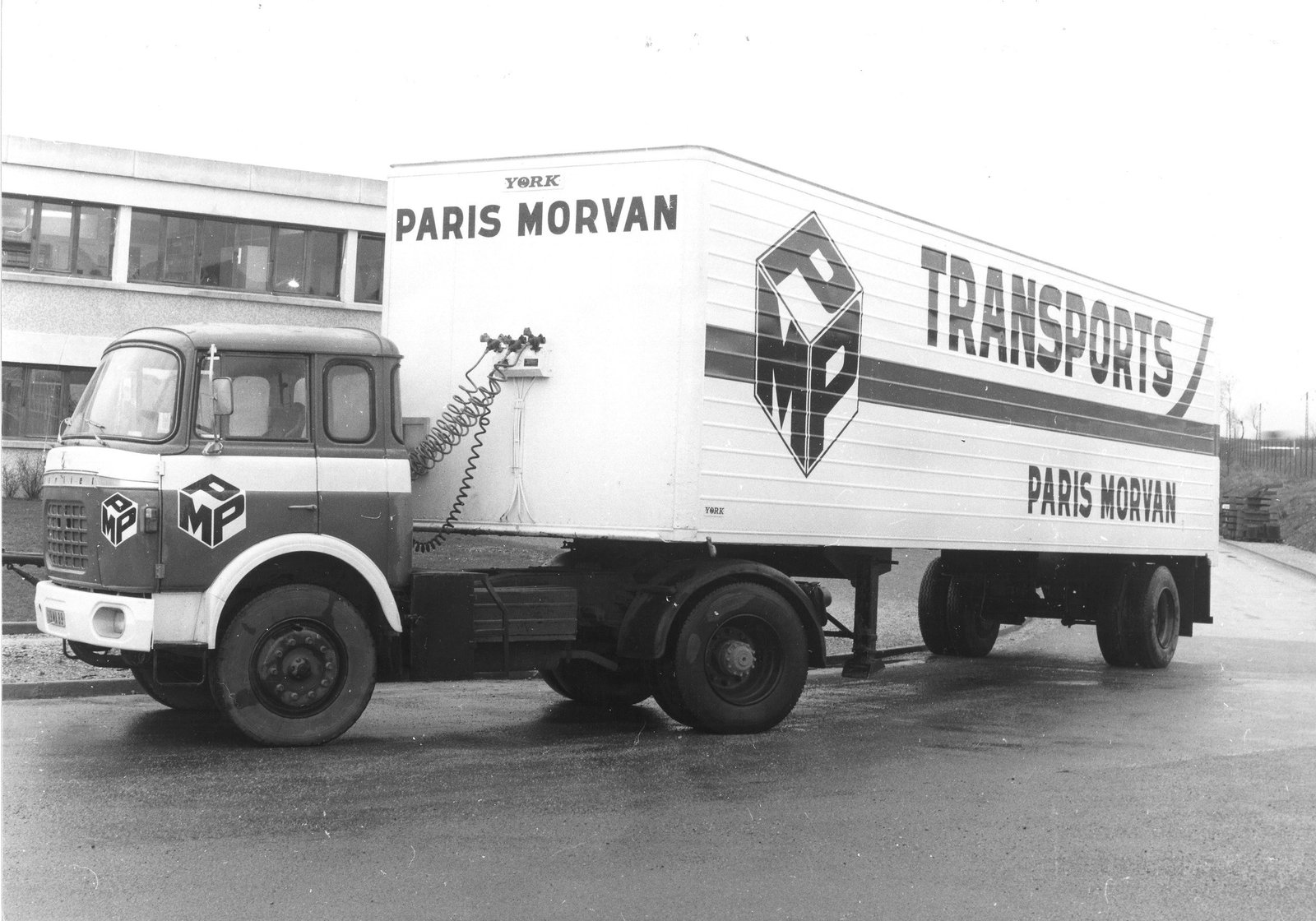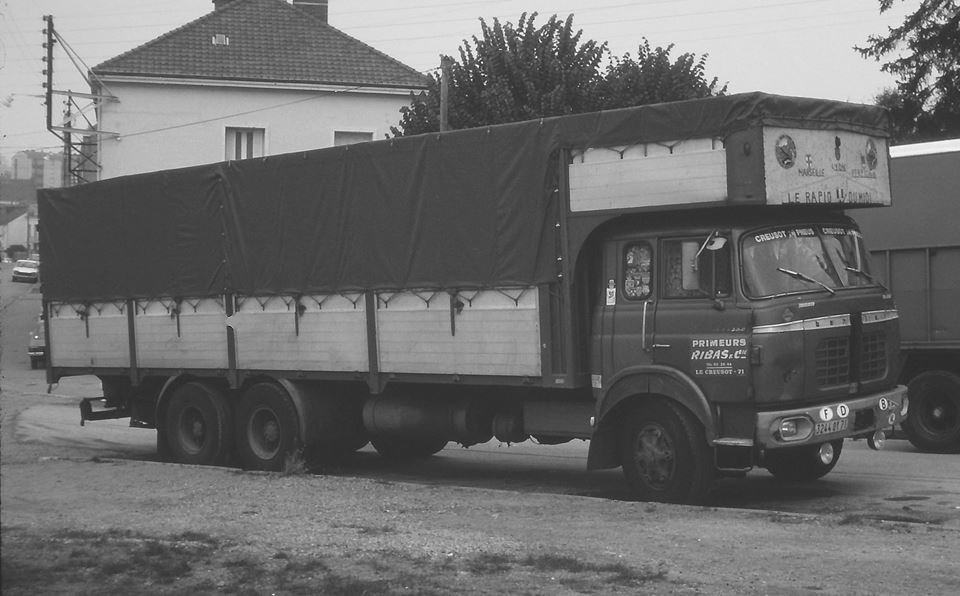Always searching pictures of Berliet GLR from abroad France, thanks.

Certainly freshly re-painted. A very neat job, even if I would have keptthe chassis and a few equipments in black.
Even if there are no nowadays cars to be seen (the picture was probably carefully framed), I guess this truck is an excellent Dutch refurbishing!
Apologies if this has appeared before in this thread,
but I just discovered it and thought it might be interesting.
youtube.com/watch?v=BQlMp0D1MOk
A bit of a debate as to whether the mountain section is Cenis or Genevre, could be either for me.
What do others think?
Note the sleepercabs in 1960 and the bare armed tee shirt up in the snow.
Did those Berliets have good heaters then?
I’m going to send it to a French mate of mine in Dole, he is an ex Onatra driver.
Same vintage as me. ![]()
No nostalgia for the handballing sacks from the front of the trailer though.
Did French drivers have to do it back then, certainly did in Britain at the time. ![]()
I was told it was the Montcenis pass road, which was the main way to Italy from France before the Mont Blanc and Fréjus Tunnels were bored. The Relaxe cab ha a proper standard heating system, but certainly not as efficient as todays heatings. The “M2” bonneted cab had an optionnal efficient heating/defrosting. I remember that, when I started driving in 1979, some drivers filled a big tin can with sand and alcohol, and kept it burning during the night.
Froggy55:
I was told it was the Montcenis pass road, which was the main way to Italy from France before the Mont Blanc and Fréjus Tunnels were bored. The Relaxe cab ha a proper standard heating system, but certainly not as efficient as todays heatings. The “M2” bonneted cab had an optionnal efficient heating/defrosting. I remember that, when I started driving in 1979, some drivers filled a big tin can with sand and alcohol, and kept it burning during the night.
It looked like Mont Cenis to me but someone in the comments questioned that.
I have done both but only with the car over Genevre.
As regards the heating, they seem to be double manned so maybe they cuddled up together. ![]()
A burning can all night, seems a bit extreme and what about the fumes?
Reminds me of when I had a bright idea to stop my Albion freezing its windows parked outside home.
I put a paraffin heater (the flat round type usually pushed under the sump to keep the oil warm)
on the bonnet but in the morning the windows were black with soot. ![]()
![]()
books.openedition.org/igpde/3280?lang=fr
Fitted with a “primeurs” bodywork, to carry crates of fruit and vegetables. They used to pile them uf to the roof. I remember that I workeed in January 1979 in a fruit cooperative near Montpellier, where we loaded trucks that way. No palettes, but just thousands of crates piled in semi-trailers. As many as could fit!
To come back to my previous picture, it happens you British had the Rail & Road Trafic act in 1933, the aim of which was roughly the same as our French Coordination Rail-Route.
Registered in the first half of the seventies (not sure about the second letter of its plate), but its alloy dropsided body work looks more recent. Thanks for the picture, Michel.
Froggy55:
Registered in the first half of the seventies (not sure about the second letter of its plate), but its alloy dropsided body work looks more recent. Thanks for the picture, Michel.
Unusual that- the KB2400 cab was available from 1970, so I wonder why that one has a Relaxe cab? Did the French give re-registrations, if a vehicle moved from one part of the country to another?
[zb]
anorak:Froggy55:
Registered in the first half of the seventies (not sure about the second letter of its plate), but its alloy dropsided body work looks more recent. Thanks for the picture, Michel.Unusual that- the KB2400 cab was available from 1970, so I wonder why that one has a Relaxe cab? Did the French give re-registrations, if a vehicle moved from one part of the country to another?
Have they not always done so? Until a few years back anyway when the whole thing changed to national.
[zb]
anorak:Froggy55:
Registered in the first half of the seventies (not sure about the second letter of its plate), but its alloy dropsided body work looks more recent. Thanks for the picture, Michel.Unusual that- the KB2400 cab was available from 1970, so I wonder why that one has a Relaxe cab? Did the French give re-registrations, if a vehicle moved from one part of the country to another?
You’re absolutely right, but most Relaxe-cabbed models continued to be produced until 1975. To answer the second part of your question, until the new regitration system was adopted in 2009, when a vehicle chyanged of “département” (sale or moving), you had to change its registration.
Froggy55:
[zb]
anorak:Froggy55:
Registered in the first half of the seventies (not sure about the second letter of its plate), but its alloy dropsided body work looks more recent. Thanks for the picture, Michel.Unusual that- the KB2400 cab was available from 1970, so I wonder why that one has a Relaxe cab? Did the French give re-registrations, if a vehicle moved from one part of the country to another?
You’re absolutely right, but most Relaxe-cabbed models continued to be produced until 1975. To answer the second part of your question, until the new regitration system was adopted in 2009, when a vehicle chyanged of “département” (sale or moving), you had to change its registration.
Thanks for information Monsieur. I am reminded that I have this in my files:
No 6x2s on there. Were they axle-added conversions, like in Italy?
I gather the GPR 12 was out of production in 1973. Long-distance 6-wheel trucks were not popular in France at that time. Hauliers would rather have either a 4-wheeler + trailer, or an articulated outfit.
Thanks again Froggy55- I make that another stitch in the tapestry. ![]()









